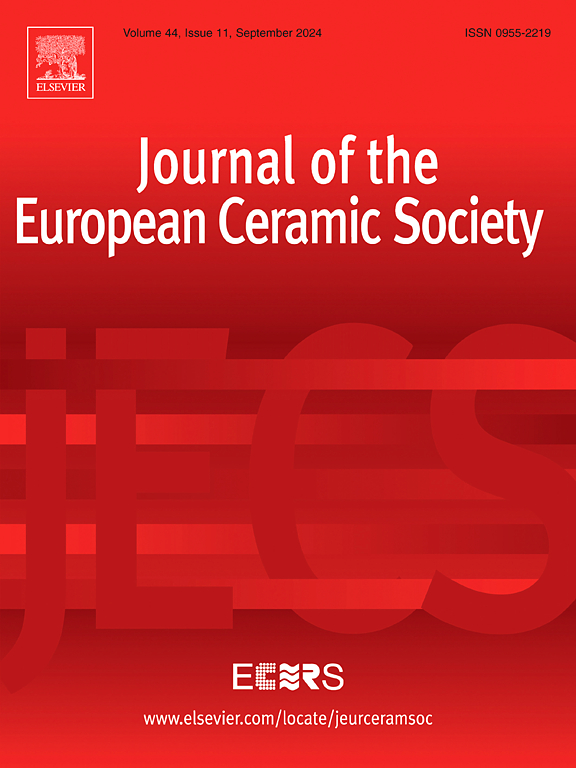Degradation of YSZ thermal barrier coatings by CMAS and CMAS-Na2SO4 between 1250°C and 1350°C
IF 5.8
2区 材料科学
Q1 MATERIALS SCIENCE, CERAMICS
Journal of The European Ceramic Society
Pub Date : 2025-03-25
DOI:10.1016/j.jeurceramsoc.2025.117405
引用次数: 0
Abstract
Calcium-magnesium-aluminum-silicate (CMAS) corrosion attack induces degradation and failure of thermal barrier coatings (TBCs) readily. In this study, the degradation behavior of plasma-sprayed 7YSZ TBCs against CMAS and CMAS-Na2SO4 (abbreviated as CMAS-S) corrosive medium between 1250 °C and 1350 °C was comprehensively investigated. The higher corrosion temperature promoted the initial spreading of CMAS and CMAS-S on TBCs induced by the decreased viscosity and improved wettability of the glassy melt. The obvious crystallization inside CMAS-S restricted the initial spreading at lower temperatures of 1250 °C and 1300 °C, while the smaller viscosity of CMAS-S dominated spreading at a higher temperature of 1350 °C. As for prolonged corrosion duration, higher corrosion temperatures intensified coating bending and glass melt infiltration. In particular, the addition of Na2SO4 salt into CMAS severely degraded coating microstructure due to the decreased viscosity, facilitating CMAS infiltration and coating delamination.
求助全文
约1分钟内获得全文
求助全文
来源期刊

Journal of The European Ceramic Society
工程技术-材料科学:硅酸盐
CiteScore
10.70
自引率
12.30%
发文量
863
审稿时长
35 days
期刊介绍:
The Journal of the European Ceramic Society publishes the results of original research and reviews relating to ceramic materials. Papers of either an experimental or theoretical character will be welcomed on a fully international basis. The emphasis is on novel generic science concerning the relationships between processing, microstructure and properties of polycrystalline ceramics consolidated at high temperature. Papers may relate to any of the conventional categories of ceramic: structural, functional, traditional or composite. The central objective is to sustain a high standard of research quality by means of appropriate reviewing procedures.
 求助内容:
求助内容: 应助结果提醒方式:
应助结果提醒方式:


